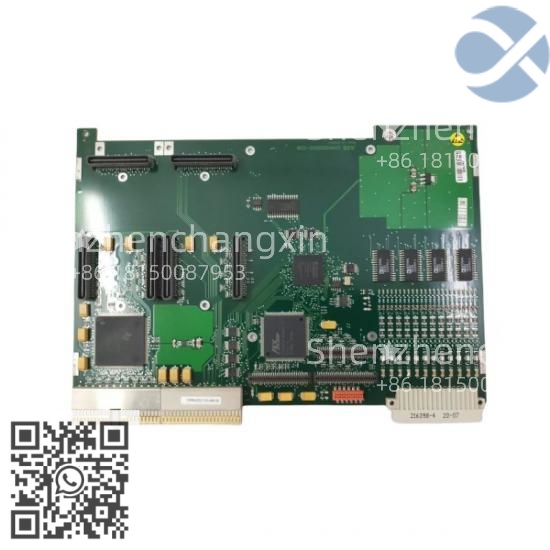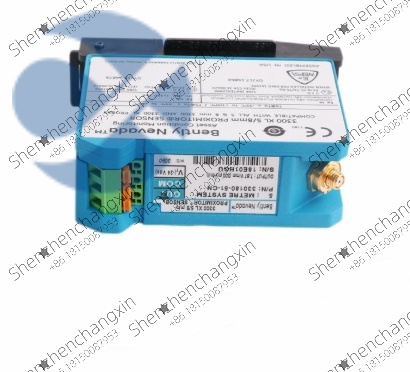
Bently Nevada-330180-51-CN-3300 XL:High-Precision Eddy Current Sensor for Rotating Machinery Displacement Monitoring
In industrial rotating machinery condition monitoring systems,eddy current sensors serve as the”front-end sensing antennae”for capturing core equipment operating parameters.As the representative eddy current sensor in the 3300 XL series,the Bently Nevada-330180-51-CN-3300 XL,with its nanometer-level measurement resolution,stable operation over a wide temperature range,and deep compatibility with the-3500 monitoring system,has become a core component for displacement and vibration monitoring of key equipment(such as turbines,compressors,and generators)in the power,petrochemical,and metallurgical industries.Whether monitoring axial displacement of steam turbines in thermal power plants or capturing radial vibration in chemical centrifugal compressors,this sensor converts machine operating conditions into precise electrical signals,providing reliable raw data to the back-end-3500-92 monitoring module,serving as the”first line of defense”for ensuring the safe operation of rotating equipment.
1.Hardware Design and Core Parameters:The Performance Cornerstone of Eddy Current Monitoring Technology
1.1 Industrial-Grade Eddy Current Sensor Hardware Architecture
The Bently Nevada-330180-51-CN-3300 XL features a compact eddy current sensor design consisting of a probe,extension cable,and preamplifier,designed to withstand harsh industrial environments.The probe,housed in a stainless steel 316L housing with a diameter of 11.1mm and a length of 38.1mm,offers excellent corrosion and wear resistance.It can be directly installed in the dedicated measurement hole of the bearing housing of rotating equipment,withstanding the vibration and high temperatures associated with operational equipment.The extension cable utilizes fluoropolymer insulation and a double-layer tinned copper mesh shield(shielding efficiency≥90dB),effectively protecting against electromagnetic interference in industrial environments.Cable lengths are customizable(standard 10m/15m/30m)to meet the installation distance requirements of different equipment.The preamplifier,housed in a sealed metal housing(IP65 protection rating)measuring approximately 89mm×51mm×25mm,can be mounted in a control cabinet or bracket near the equipment.It features a built-in high-precision eddy current detection circuit.This circuit excites the probe coil with a high-frequency oscillating signal(2MHz).As the distance between the probe and the rotating shaft(metal)changes,the coil impedance changes accordingly.The circuit converts this impedance change into a linear voltage signal ranging from-20V to+20V DC,enabling precise conversion of displacement and vibration parameters.The preamplifier also features overvoltage protection(input voltage≤30V DC)and short-circuit protection to prevent hardware damage caused by incorrect sensor wiring.1.2 Key Electrical and Measurement Parameters
Parameter Category
Specifications
Product Model
Bently Nevada-330180-51-CN-3300 XL
Manufacturer
Baker Hughes(Bently Nevada brand)
Product Type
Industrial-grade eddy current displacement/vibration sensor(3300 XL Series)
Compatible Monitoring System
Bently Nevada 3500 Series(Directly compatible with the-3500-92 monitoring module)
Measurement Principle
Eddy current effect(high-frequency electromagnetic induction)
Measuring Range(Displacement)
2mm(linear range),expandable to 5mm(requires matching preamplifier)
Measurement Resolution
0.1μm(when used with the-3500-92 module)
Linearity Error
≤±0.5%full scale(typical)±0.2%)
Sensitivity
8mV/μm(standard configuration,fine-tunable via preamplifier)
Frequency Response
0-10kHz(covers the common vibration frequency range of rotating machinery)
Applicable Probe Materials
Ferromagnetic metals(such as 45#steel and stainless steel);non-ferromagnetic metals require custom probe coils.
Operating Temperature Range
Probe:-40°C to+121°C;Preamplifier:-29°C to+85°C
Environmental Adaptability
Humidity≤95%RH(non-condensing),Vibration Resistance:20g(10Hz to 2000Hz),Shock Resistance:50g(11ms)
Output Signal Type
Analog voltage(-20V to+20V DC,corresponding to 0-2mm displacement)
Cable Characteristics
Extension Cable:Double-shielded,Impedance 50Ω±10%,Capacitance 100pF/m
Safety Certifications
CE,UL,CSA,ATEX(Explosion-proof certification,optional Ex d IIC T6)
Calibration Standards
Complies with ISO 10817-1 Rotating Machinery Vibration Measurement Standard,API 670 Rotating Equipment Monitoring Standard
2.Core Function:Accurate Sensing of Rotating Machinery Parameters
2.1 Nanoscale Displacement and Vibration Dual-Parameter Monitoring
-330180-51-CN-The 3300 XL’s core advantage lies in its integrated,precise monitoring of displacement and vibration.Based on the eddy current effect,it can measure both static displacement(such as axial play and radial eccentricity)and dynamic vibration(such as radial vibration and shaft imbalance)of rotating shafts.In thermal power unit steam turbine monitoring,the sensor probe is installed on the turbine thrust bearing housing,maintaining an initial clearance(typically 0.5mm)from the main shaft end face.As the main shaft undergoes axial displacement,the distance between the probe and the end face changes,and the preamplifier’s output voltage signal changes linearly accordingly.For example,when the displacement increases from 0mm to 2mm,the output voltage increases linearly from-20V to+20V.The back-end 3500-92 monitoring module acquires this signal using a 24-bit ADC,capable of resolving displacement changes as small as 0.1μm,accurately capturing the minute axial movement caused by thrust bearing wear(typically,initial wear is only 0.5μm/h).In dynamic vibration monitoring scenarios(such as compressor radial vibration),the sensor probe is installed at the radial measurement position of the bearing housing,with a 1mm clearance from the shaft surface.When the shaft generates radial vibration due to imbalance,the probe outputs a voltage signal that fluctuates with the vibration frequency(e.g.,50Hz for a 3000rpm unit).The signal frequency ranges from 0 to 10kHz,capturing critical speed vibration peaks during unit startup and shutdown(e.g.,the critical speed of a steam turbine is typically 1500-2000rpm).This provides complete raw data for the-3500-92 module’s spectrum analysis,helping operations and maintenance personnel determine the type of vibration fault(e.g.,imbalance,misalignment,bearing damage).2.2 Deep Interoperability with the-3500-92 Monitoring Module
As the”front-end sensing unit”of the Bently Nevada 3500 Monitoring System,the-330180-51-CN-3300 XL and the-3500-92 Monitoring Module achieve seamless hardware-level compatibility.The-20V to+20V DC signal output from the sensor preamplifier can be directly connected to the analog input channels of the-3500-92 module,eliminating the need for additional signal conditioning equipment.The-3500-92 module includes built-in calibration parameters for the 3300 XL series sensors.By entering the sensor sensitivity(8mV/μm)and range(2mm)through System 1 software,the module automatically converts the voltage signal into displacement/vibration values(e.g.,16V corresponds to 1.5mm displacement),eliminating complex parameter conversion steps.In terms of data synchronization,the sensor’s 10kHz frequency response perfectly matches the-3500-92 module’s 10kHz sampling rate,ensuring vibration signals are free of frequency distortion.For example,when a compressor experiences 10kHz high-frequency vibration,the sensor fully captures the vibration waveform,which is then collected synchronously by the-3500-92 module.System 1 software then performs spectrum analysis on this data to accurately identify the source of high-frequency vibration(such as high-frequency impact caused by impeller blade damage).Furthermore,the combined measurement accuracy of the sensor and-3500-92 module reaches±0.1μm,meeting the API 670 accuracy requirements for critical rotating equipment monitoring(e.g.,axial displacement measurement error≤±1%full-scale).2.3 Stable Operation in Harsh Environments
To address the complex environments of industrial sites,the-330180-51-CN-3300 XL features multiple hardware design optimizations for protection.The probe is constructed of high-temperature-resistant stainless steel,capable of long-term operation in environments as high as 121°C(e.g.,temperatures near turbine bearing housings typically range from 80°C to 100°C).It also exhibits corrosion resistance,withstanding trace corrosive gases(such as ammonia and hydrogen sulfide)found in chemical compressor plants.The double-shielded extension cable effectively mitigates electromagnetic interference generated by inverters and high-power motors(e.g.,radiated interference from 6kV high-voltage motors),ensuring signal transmission noise≤1mV and preventing measurement errors caused by interference.
For vibration tolerance,both the sensor probe and preamplifier have passed a 20g vibration test(10Hz-2000Hz),ensuring they can withstand the continuous vibration of rotating equipment(e.g.,the bearing seat vibration of a compressor typically ranges from 2g to 5g),preventing vibration-induced probe position shift or poor cable contact.A petrochemical company reported that the-330180-51-CN-3300 XL sensor has been operating continuously for three years on the centrifugal compressor of a catalytic cracking unit without any measurement failures due to environmental factors.Its signal stability far exceeds that of traditional capacitive sensors.
3.Typical Application Scenario:Collaborative Monitoring Case with the-3500-92 Module
3.1 Power Industry:Steam Turbine Axial Displacement and Radial Vibration Monitoring
In the steam turbine monitoring system of a 600MW thermal power unit,each system is equipped with eight-330180-51-CN-3300 XL sensors,each working with two-3500-92 monitoring modules:four sensors monitor the radial vibration of the high-and low-pressure cylinders(installed radially on the bearing housing),two monitor the axial displacement of the thrust bearing(installed on both sides of the thrust plate),and two monitor the main shaft eccentricity(installed on the free end of the main shaft).The-20V to+20V signal output by the sensor is connected to the-3500-92 module,which transmits the data to the 3500 system host,where the monitored parameters are displayed in real time via the System 1 software.
When thrust bearing wear increases during turbine operation,and axial displacement increases from 0.3mm to 0.8mm(alarm threshold 1.0mm),the sensor detects the displacement change and converts it into a 12V voltage signal.The-3500-92 module collects this signal within 1ms and triggers an alarm.Operations and maintenance personnel use trend analysis to determine the bearing wear rate(0.1mm/day)and schedule a preemptive shutdown for bearing replacement to avoid rotor rubbing accidents caused by further displacement exceeding the limit(trip threshold 1.5mm).With this combination,the number of unplanned turbine shutdowns has dropped from one to two per year to zero,reducing power generation losses by approximately 20 million kWh annually.3.2 Petrochemical Industry:Centrifugal Compressor Radial Vibration and Shaft Misalignment Monitoring
For monitoring propylene compressors at a petrochemical company,four 330180-51-CN-3300 XL sensors and one 3500-92 module are deployed:two sensors monitor radial vibration on the compressor’s drive and non-drive ends,and two monitor radial vibration on the speed increaser’s input/output shafts.The vibration signals captured by the sensors(e.g.,an increase in drive-end vibration from 50μm to 120μm)are collected by the 3500-92 module.System 1 software then performs”shaft trajectory analysis”based on the signals,identifying shaft misalignment(an elliptical shaft trajectory).
Based on the analysis results,operations and maintenance personnel adjusted the compressor and motor alignment,reducing vibration to below 40μm.In this application,the sensor’s 10kHz frequency response fully captures the double-frequency vibration(100Hz)caused by misalignment,providing key diagnostic information.This prevents excessive bearing wear caused by misalignment(which typically reduces bearing life by 50%)and extends the compressor’s mean time between failures from 18 months to 36 months.
3.3 Metallurgical Industry:Rolling Mill Main Drive Motor Shaft Vibration Monitoring
To monitor the main drive motor of a 2050mm hot rolling mill in a steel plant,two 330180-51-CN-3300 XL sensors are installed radially on the front and rear bearing seats of the motor,working in conjunction with a 3500-92 module to monitor radial vibration.When motor vibration increases from 8mm/s(corresponding to 40μm displacement)to 18mm/s(corresponding to 90μm displacement)due to insufficient bearing lubrication,sensors capture the vibration changes in real time,triggering an alarm in the-3500-92 module.The mill control system automatically reduces the rolling speed and relubricates the lubrication system,preventing mill downtime caused by bearing burnout.
After implementing this combination,the main drive motor bearing failure rate dropped from 3 to 0.5 per year,increasing mill availability by 3%and reducing annual production losses due to downtime by approximately 12,000 tons.
4.Comparison with Similar Sensors:Core Advantages of the 3300 XL Series
4.1 Comparison with the Bently Nevada 3300 Series(Previous Generation)
The 3300 Series is Bently Nevada’s classic eddy current sensor.The 3300 XL Series(-330180-51-CN),as an upgraded version,offers comprehensive improvements in core performance:
Extended Measurement Range:The 3300 Series has a maximum linear range of 1mm,while the 3300 XL extends this to 2mm,enabling monitoring of equipment with larger displacements(such as main shaft movement in large turbines);
Improved Temperature Tolerance:The 3300 Series probe has a maximum operating temperature of 85°C,while the 3300 XL increases this to 121°C,enabling application in high-temperature equipment(such as near the high-pressure cylinder of a steam turbine);
Optimized Frequency Response:The 3300 Series has a frequency response of 0-5kHz,while the 3300 XL extends this to 121°C.0-10kHz,capable of capturing higher-frequency vibration faults(such as high-frequency blade impact).
Improved interference resistance:The 3300 XL extension cable features double shielding,improving interference resistance by 30%compared to the 3300 series and enhancing signal stability in strong electromagnetic environments.
For retrofitting older equipment,the 3300 XL series can directly replace the 3300 series without modification.The 3500-92 module configuration offers excellent compatibility.
4.2 Comparison with other brands of eddy current sensors(such as the SKF CMSS 6000)
Comparison Dimensions
Bently Nevada-330180-51-CN-3300 XL
SKF CMSS 6000
Measurement Accuracy
0.1μm resolution,±0.2%linearity error
0.5μm resolution,±0.5%linearity error
Temperature Range
Probe-40°C to+121°C
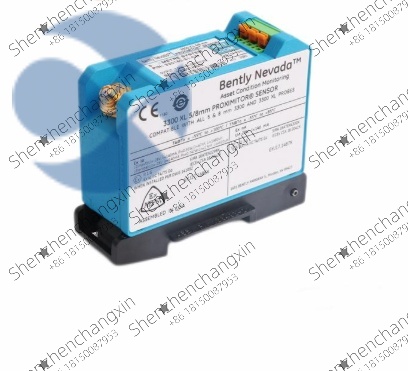
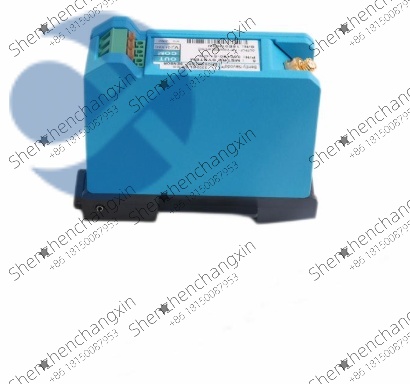

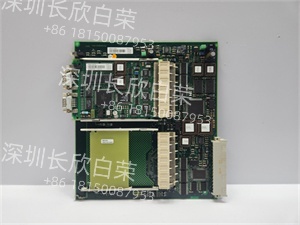
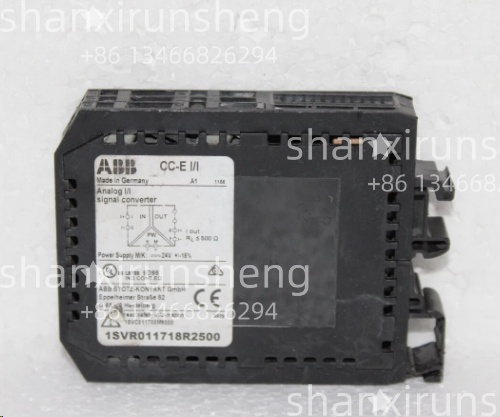
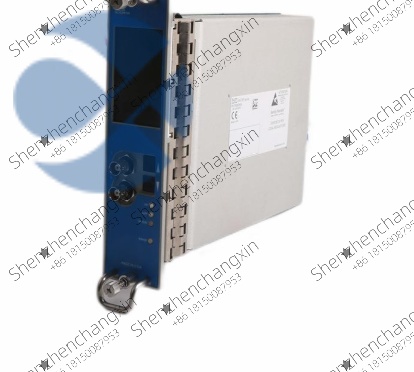
.jpg)
